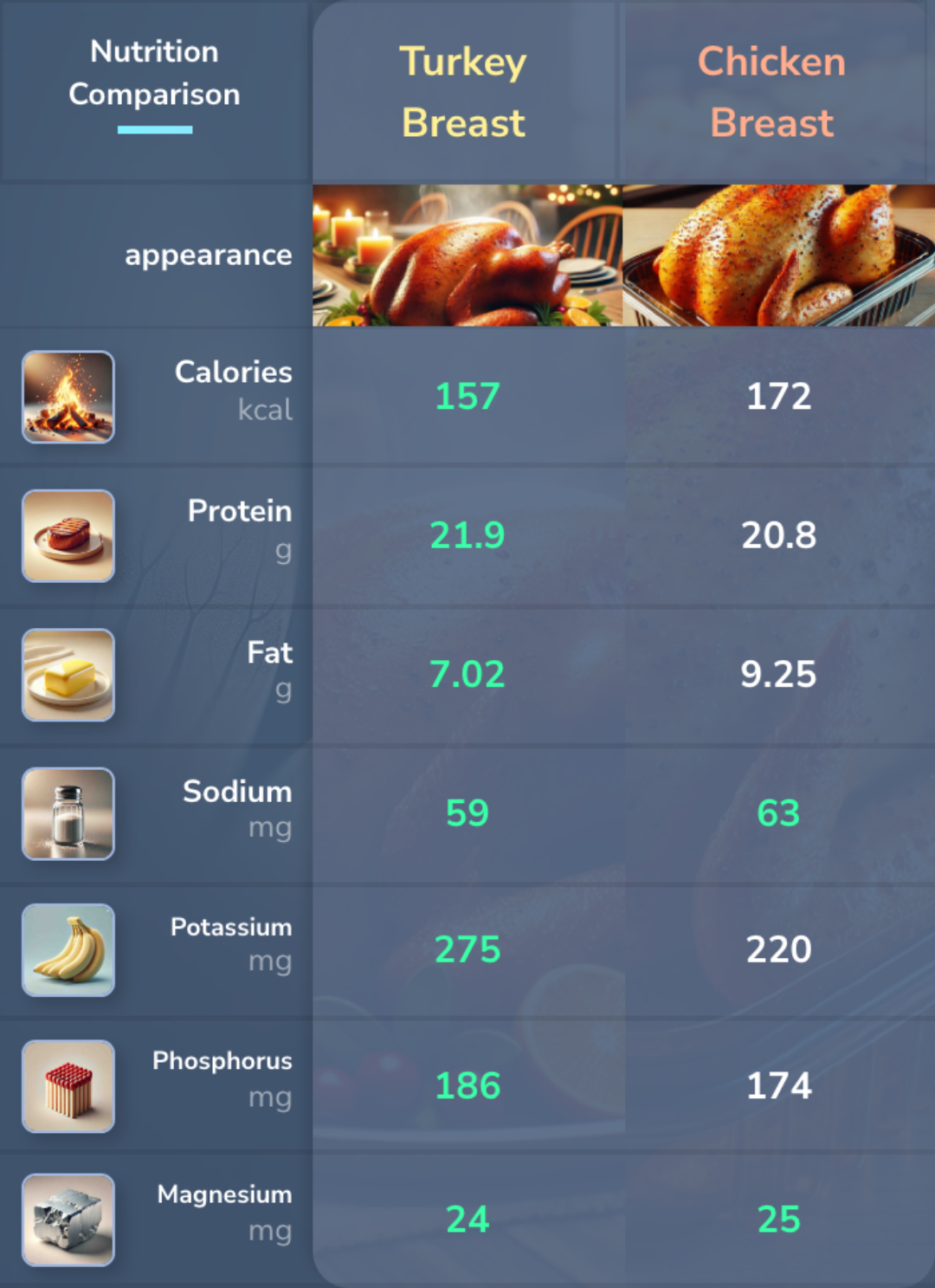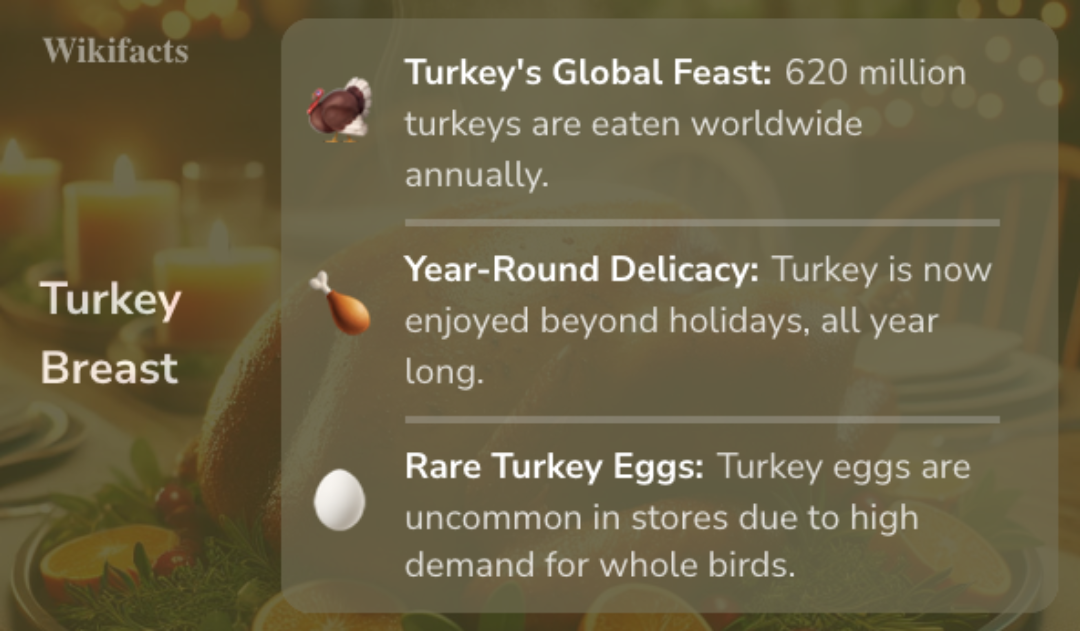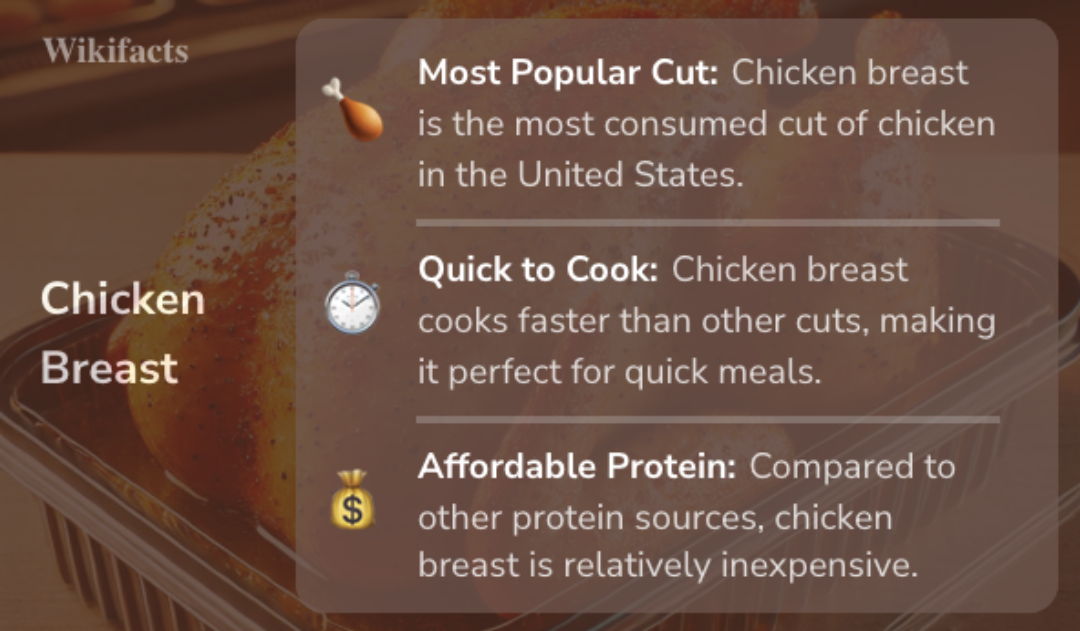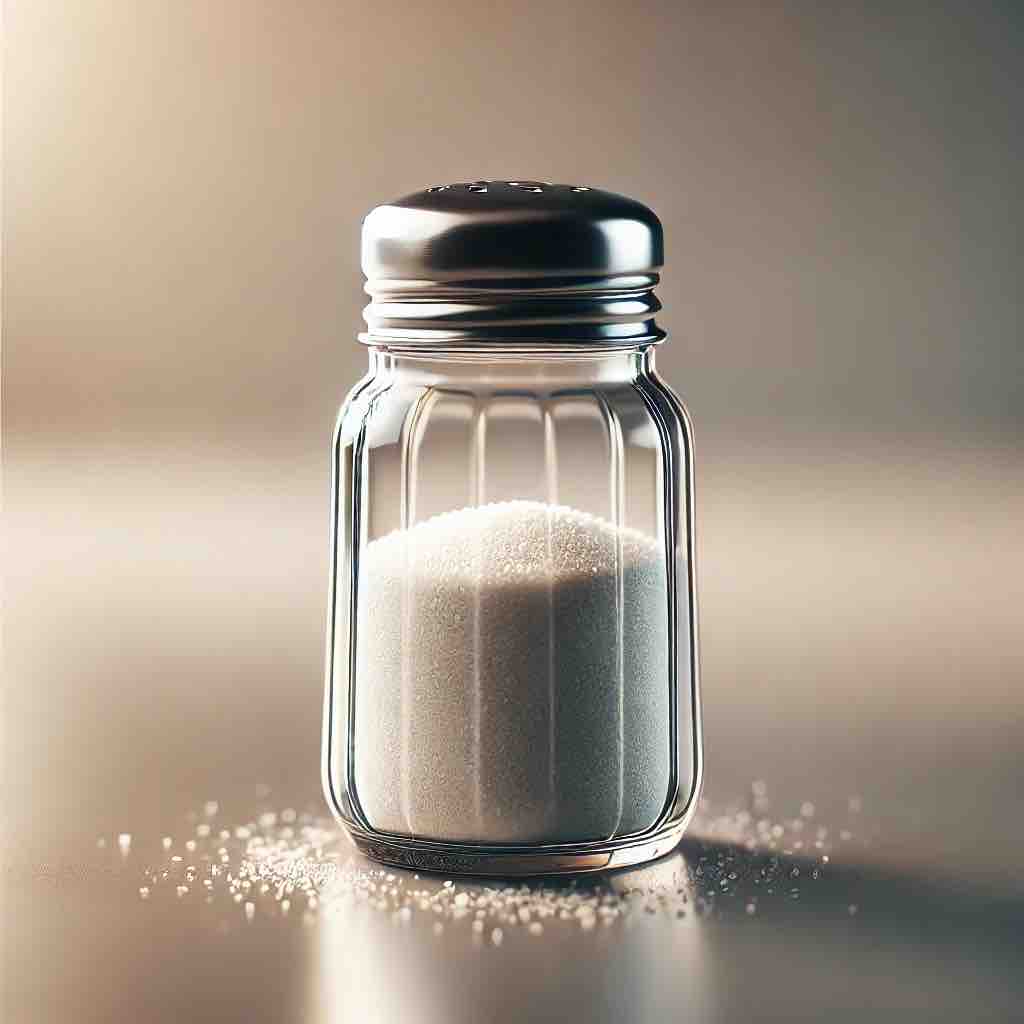Holiday Nutrition
Nutrition Comparisons
Turkey Breast vs. Chicken Breast
Turkey breast has fewer calories, more protein, and is leaner compared to chicken breast. It also provides more potassium, zinc, copper, and phosphorus, making it slightly more nutrient-dense. Chicken breast is comparable in magnesium and slightly higher in fat, making both excellent but slightly different choices for health-conscious individuals.
Published: November 25, 2024

Background:Turkey Breast

top benefits 👍
💪
High Protein Content:Turkey breast offers about 27g of protein per 4 oz serving.
🧠
Rich in B Vitamins:Contains B1, B2, B3, B6, and B12, supporting energy and brain function.
🦴
Mineral-Rich Meat:Provides selenium, zinc, and phosphorus for various bodily functions.
drawbacks 👎
⚠️
High Sodium in Processed Forms:Processed turkey products can be high in sodium, affecting blood pressure.
Background:Chicken Breast

top benefits 👍
💪
High in Protein:Chicken breast provides about 26 grams of protein per 3-ounce serving.
🦴
Rich in Phosphorus:Chicken breast contains phosphorus, supporting bone health.
🧠
Contains Vitamin B6:Vitamin B6 in chicken breast aids brain function.
drawbacks 👎
⚖️
Higher Fat Content:Chicken breast has more fat than turkey breast, with 3 grams per 100 grams.

Calories
Chicken breast has 172 kcal compared to 157 kcal in turkey breast, making turkey slightly lower in calories, which may be preferred for calorie-conscious diets.

Protein
Turkey breast has 21.9 g of protein versus 20.8 g in chicken breast, giving turkey a slight edge for protein content, which is beneficial for muscle building and repair.

Fats
Turkey breast contains 7.02 g of fat, which is lower than the 9.25 g in chicken breast, making turkey a leaner option.

Sodium
Both turkey and chicken breast are low in sodium, with 59 mg and 63 mg respectively, making them suitable for low-sodium diets.